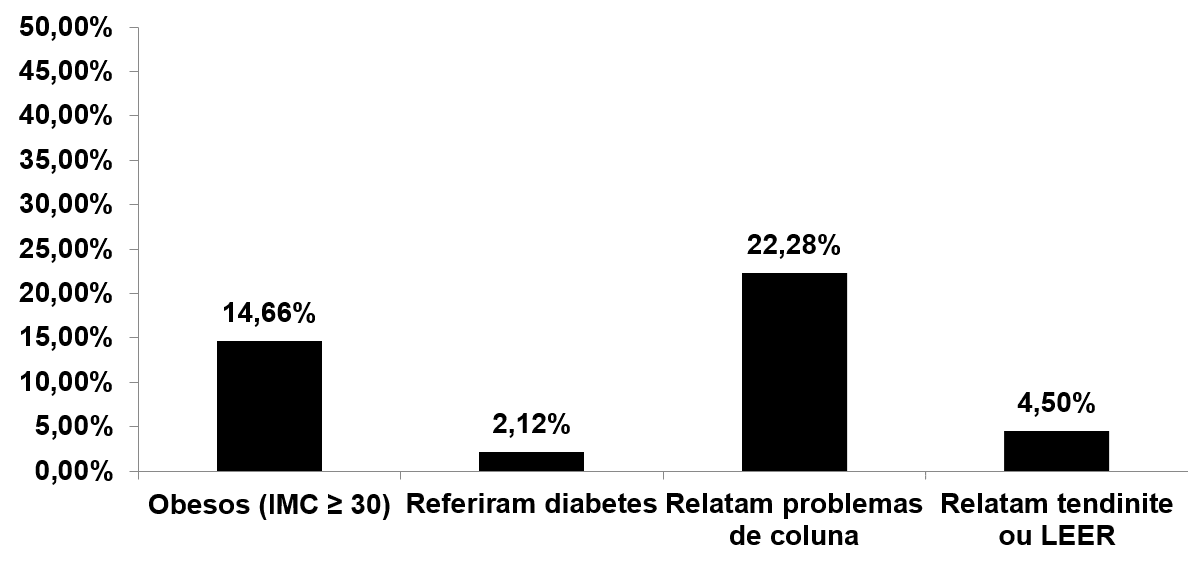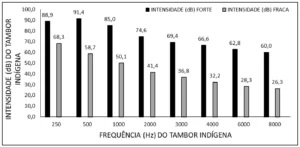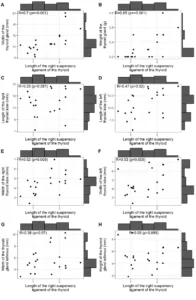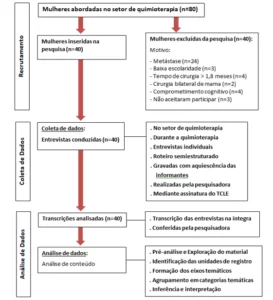MOREIRA, Rodrigo Canto [1], DENDASCK, Carla Viana [2], OLIVEIRA, Ciane Martins de [3], DIAS, Cláudio Alberto Gellis de Mattos [4], FECURY, Amanda Alves [5], OLIVEIRA, Euzébio de [6]
MOREIRA, Rodrigo Canto; et. al. Socioeconomic and health profile of workers in industries of the Amazon region– Scientific Journal Multidisciplinary Nucleus of Knowledge. Year 01, Issue 11, Vol. 10, pp. 73-86. November of 2016 – ISSN. 2448-0959
SUMMARY
This work aims to present the socioeconomic profile of industrial workers from Pará and health data, identifying some of the problems that deserve attention in the business community and governmental authorities. To this end, we conducted a descriptive and transversal study with secondary data analyses, involving 56 workers 9041 national industries present in the brazilian Amazon region. The results indicate a lower number of employees who report diabetes and hypertension and increased incidence of spinal problems, when compared to the brazilian population and indicative of depression. It is concluded that there is a need for greater public and private policies concerning health surveillance
Keywords: occupational health, health surveillance, industrial Ergonomics, psychopathology of work.
1. INTRODUCTION
From time to time, the world of work is undergoing intense transformations, and in recent decades, with the advent of new technologies, these changes are having a reflection, both in production and in organizational culture, quite peculiar; Since with the gradual progress in the Organization of production, with the process of globalization and the new order established in the relations between capital and labor, conflicting relationships at work are still present, giving rise to new processes of illness and difficulties to return and, above all, stay at work (TOLDRA et al., 2010).
The effects of new job setup (computerization and automation in the offer of products and services) increased the need of a greater knowledge about the consequences caused by recent changes, considering that the increased control over deadlines and targets, which are well delineated, organizations can generate harms to health of the worker and that before did not exist. The routine is more intense within capitalist organisations due to the search for profit that is increasingly fierce, and can even run down the valuation of the employee (COUTO, 1995).
Meet the occupational health promotes maintenance of motivational practices, benefiting the worker in your health and in your productivity/profitability. Studies on health promotion in the workplace have quantified the relationship between good health and increased productivity (SANTOS; VAJDA, 2007). In addition, the national policy on occupational health and safety (BRAZIL, 2011) and the National Health Policy of the worker and the Worker (BRAZIL, 2012) ensure to the employee the necessary support to the improvement and effectiveness of the services directed to them by private companies and the Government.
Statistics reveal that 40% of the functional clearances are motivated by small illnesses and malaise, as colds, backaches, sprains and other, which can be avoided with ergonomic measures (Saints; VAJDA, 2007). In addition, one can observe an increase of diseases and the emergence of new profile of morbidity in workers in the country in recent decades, especially the repetitive strain injuries (RSI) and the mental health problems arising from the restructuring of the economy and production, which suffers a moment of transition where mechanization and specialization of Labor won space.
In Brazil, the difficulty in establishing a profile of workers and their needs for health care are, in order, in particular, the production features are regionalised, where each region has an economic profile of particular activity and its workers have different activities. The difference also exists in the emergence of Occupational Diseases related to work (WMSD’s) that are therefore related to the type of activity carried out (crafts, industry, agriculture, services, among others). To outlining a profile and draw forms of intervention in occupational health at the national level is a challenge to be overcome. Therefore, analyzing each region and its peculiarities is the alternative that this study proposes to get acquainted so regionalized the worker’s health, analyzing individuals of greater potentiality in the State of Pará, the industrial sector.
Taking into account the importance of monitoring for maintenance of health, this work aims to present data relating to recurring health problems in workers in the industry sector para, which integrates the Amazon region, and highlight the importance of measures to prevent potential harms.
2. METHODOLOGY
This study is characterized by being of the descriptive type, cross-section with secondary analysis of data. Involves 9,041 56 workers national industries operating in the State of Pará. The minimum size of the sample was calculated considering a sampling error of 3%, with 95% confidence interval.
The industries were selected at random, without proportional division of gender, marital status, or socioeconomic status. With this, it becomes possible to identify the profile of workers in the sector.
Data collection was undertaken from archived documents on quality-of-life management of the Social Service for industry (SESI), in the State of Pará. The data are from field research carried out in the years 2013 and 2014 for professionals who replied to the survey instrument, the questionnaire. The questionnaire validated by Barros (1999) applied 89 objective questions directed the health and lifestyle of each worker.
The informed consent (TFCC) provided by SESI/PA was presented for consideration and signature of respondent, specifying the secrecy of personal information provided. After this step, complete forms were used, containing the signature of the worker or any other data essential to the accuracy of the results, making the search even more credible, discarding files that do not match this requirement.
Filling out the questionnaire was done by professionals and by the own industry employee searched; respecting the ability of the individual to fill your own form with regard to the level of education, level of understanding of the questions proposals and vision problems. Some items of the questionnaire were obligatorily filled by health professionals, who made anthropometric assessment and measurement of blood pressure (BP), the same workers observed, in the workplace, the presence of diseases such as obesity and Hypertension (SAH).
After collection, the data were stored in the database in the Microsoft Office Excel 2010 ™ (Microsoft Corporation, Redmond, United States). Points out that the data were collected by the SESI/PA and the use of data in the analysis went through approval of the same. Descriptive analysis was made by using charts and tables.
The bibliographic survey which served as a support for this study began in March 2015, and was accessed by different databases available online, such as Bireme, which encompasses the systems Scielo, Lilacs, Scad and the Cochrane Library; the National Center for Biotechnology Information (NCBI), which involves the Pubmed, the online books and other virtual bases; the portal CAPES and international search engines.
3. RESULTS
From the data collected, it was observed that the industry workers in the Amazon region are predominantly male, with income up to three minimum wages, married, who consider themselves family heads, earn up to three minimum salaries and have their own place (table 1).
| Table 1: characterization of gender, marital status, position in the family, monthly income, and residence of the Amazon industry workers. | |
| Variable | Percentage |
| Genus | |
| Female | 19.41 |
| Male | 78.06 |
| Marital status and position in the family | |
| Married or in a stable | 60.01 |
| Claim to be head of household | 69.98 |
| Monthly income | |
| Earn up to 3 SM | 76.69 |
| Gain of 3 to 10 SM | 15.94 |
| Earn more than 10 SM | 4.72 |
| Don’t know or no response | 0.58 |
| Residence | |
| Own | 68.79 |
| Rented or borrowed | 31.21 |
|
Caption: SM: Minimum Wages Source: Author, 2016. |
|
The research, by having heard and reviewed the Amazon brings industry workers in its scope both medical diagnosis information referred to by workers regarding information collected through clinical health assessments. The results of this investigation culminated in the eminence of metabolic, vascular problems, locomotor system and psychological.
The problems identified through the workers ‘ reports shows that, with respect to vascular problems, 6.57% of Amazonian industries workers reported being hypertensive. The clinical evaluation for the measurement of PA, 24.58% of subjects showed changes in the benchmarks adopted by diagnosis (normotenso up to 140/90 mm Hg) (cardiology, 2010). Among the evaluated, what draws attention is the percentage of workers who referred to has no medical diagnosis of HAS. 19.16% of which had altered blood pressure, deny they have HAS (Figure 1).

In the anthropometric evaluations carried out to identify obesity revealed that 14.66% of workers had some degree of obesity (Figure 2), ranging from grade 1 and grade 3 obesity (morbid obesity). The problems of the locomotor system evaluated involve some of the major complaints found in occupational health clinics. The back problems, tendonitis and repetitive strain injury (LEER). Soon, the results indicate that 22.28% of workers reported back problems, and 4.50% tendonitis or LEER (Figure 2).
Another factor was assessed the occurrence of diabetes in school population. To this end, the methodology used was the interview. The account of the employee helps to scale the seriousness of the problem, as this data has not been confirmed through clinical tests. Therefore, 2.12% of workers reported having diabetes (Figure 2), without specifying what type (Diabetes type I or II).

One of the problems of a psychological nature, was raised the percentage of workers reporting depression, reaching 2.82% of the evaluated (Figure 3). However, other data have been raised for later correlation. The percentage of respondents who have some depression disorder, identified from their responses to the questionnaire; and the percentage of those that do not refer to previous diagnosis of depression, being respectively 9.11 percent and 8.52% of respondents (Figure 3).

4. DISCUSSION
The industrial worker Amazon profile is revealed very similar to other regions of the country with respect to the variables gender, income and marital status (SILVA, 2011), where the prevalence of male industry, with income of up to three minimum wages and married. Therefore, the prevalence of men and people with low income was already expected as a reflection of the type of activity carried out, taking into account that many industrial activities require physical strength and endurance, as extractive activities, agriculture and civil construction.
With regard to health data, this study reveals that the percentage of workers who reported medical diagnosis of diabetes (2.12%) is less when compared with the national average (6.2%) presented by the last national survey of health (PNS) (IBGE, 2013). The appearance of this statistic may shows that the activity carried out by the industry, which in many cases require physical strength and endurance, benefiting the health of the worker by providing a daily routine of physical activity.
In spite of the sample have been predominantly of men (78.06%), which arguably have less chance of developing diabetes, yet it is possible to affirm that the influence of gender has the potential to influence not so significant to the results, since women (7.0%) and men (5.4%) had higher proportion of diabetes that by this research (IBGE, 2013).
The research still shows that 14.06% were obese, which refers to the fact that the development of obesity is by eating habits, with diet rich in foods calorie and low consumption of healthy foods, such as cereals and vegetables.
In General, with respect to food, many industries have cafeteria and provide food based on intake of healthy foods. However, without nutritional accompaniment to the worker at the time of the election of the diet offered, companies can’t adapt positive habits in feeding their employees (GERALDO; BANDONI; JAIME; 2008). Thus, the occurrence of chronic non-communicable diseases can greatly increase, jeopardizing the health of the worker.
Workplaces are a great space to offer health promotion programmes, particularly those aimed at reducing risk factors for metabolic and cardiovascular diseases. Health education should be carried out in daily business day. People with obesity, diabetes and HAS (diseases associated with excessive consumption of salt and sugar) demonstrate concern if you educate to acquire the ability to control possible harms to health, promoting a healthy lifestyle, and it is in this context that the health sector of the company must act. Ideally, this awareness come before the pathology set up, mainly because the change in attitude does not reflect only the individual itself, but also in their family and community, because health education has the feature of multiply to prevent (TORRES et. Al., 2011; FERREIRA et.al., 2006; Saints; Lima, 2008).
In the survey for HAS, 24.58% showed altered blood pressure at the time of the evaluation, this value that deserves attention the epidemiological level due to power ratio based on excessive consumption of salt and HAS development, thus creating another as alert to the need for food education programs in industries (GERALDO, BANDONI; JAIME, 2008).
Although many workers have presented the blood pressure changes during the clinical evaluation, only 6.57% reported diagnosis of HAS. Therefore, several conclusions can be encouraged with these data, mainly because there is a significant difference (α > 0.5) between the percentage of people who reported HAS and the people who presented a change in blood pressure during the clinical evaluation (6.57% and 24.58%, respectively).
In addition, the PNS presents the proportion of individuals of 18 years or more who refer to diagnosis HAS, in Brazil, is 21.4%; significantly higher than the number presented by this study (α > 0.5) (IBGE, 2013). Therefore, a significant amount of workers can submit HAS and not knowing, which put on alert the health protection of these employees.
The back problems and work-related musculoskeletal disorders are when it comes to health promotion and protection, as some technological components and industry activities are barriers to maintaining full physical health. In this study, the rate of workers who reported back problems (22.28%) stands out for being greater than the national average (13.50%), according to the national survey by Household sample (PnaD) (IBGE, 2008).
Some measures can be incorporated into companies for the occurrence of Osteoarticular problems acometam not their employees, especially for those who perform manual labor in administrative sectors, suffering great risk of developing physical problems due to static work (BIFF, 2006).
The promotion of regular physical activity, control of obesity (predisposing factor to back problems) ergonomics programs, gymnastics, health education, among other types of activities reported in the literature, are desirable because they are considered as protectors and promoters of physical and mental health (MONTEIRO; ALEXANDER; RAO, 2006; PADEZ, 2002).
Workplaces can affect the performance of the employee, leading to fatigue, wear and physical damage. Therefore, ergonomic analysis as a tool for the control of diseases health is a way for the resolution of complex problems that requires knowledge of the tasks, the activity developed to perform them and the difficulties faced in order to achieve the required performance and productivity (SLACK et al., 2002).
Data with respect to psychological slant disorders showed that 9.11% of Amazonian industry workers have been indicative of depression; 8.52% reported previous medical diagnosis of depression, and 2.82% claim to have depression. These items deserves a more detailed investigation, since the data made available by SESI/PA gives no basis for asserting that the workers, who once presented a medical diagnosis of depression, are the same as indicative signs of depression during the investigation. Although it is not possible to say, it’s intuitive that most workers are indicative of depression don’t know we have such a disorder, since the percentage of workers reporting clinical diagnosis (2.82%) is less than those who have the disorder during the investigation (9.11%).
When depression and anxiety indicators show psychological problems, the employer can already infer that the problem might be from the work itself. Health and the working conditions offered by the company will result in better performance and greater satisfaction of the employee and the organization. It is therefore the duty of the employer to identify whether the requirement of agility in the execution of tasks, the fear of losing the job, to domination ducts with the employee, the competitiveness among employees, among others, are influencing the behavior, which can lead to a slight psychic impairment or a more severe psychopathy (FABRIN; CASTRO, 2015).
The solution to psychological problems need an analysis of the cases, particularly where the worker should always be evaluated along their labour activity. Thus, dealing with particular situations requires the intervention of qualified professionals for the diagnosis and treatment of psychological disorders. This fact is relevant to health prevention, since the application of the intervention must be entered according to the situation presented in the company, thereby avoiding unnecessary expenses, and ineffective measures (FABRIN; CASTRO, 2015).
5. CONCLUSION
Whereas industrial activities within the Brazilian territory differ and accompany the geoeconômicas characteristics of each region, by instrument the analysis of factors of health of workers from industries operating in the State of Pará in the northern region, comprising much of the Amazon region, and thus, it was possible to identify the prevalence of physical and psychological nature problems for this population. The results reflect positive and negative indicators.
You can highlight how positive indicators the smaller number of people who report diabetes and HAS compared the brazilian population in General. As negative indicators, the back problems that potentially are related to environmental factors and ergonomic, and which have great impact on the student population of the State of Pará. In addition, the depression also appears as a negative indicator, since most of the workers that are indicative of depression don’t know we have such a disorder, due to the percentage of workers reporting a diagnosis of depression to be less than the percentage of those who have submitted indicative signs of depression during the investigation.
Based on all this, research and analysis, it is concluded that the health surveillance of workers in the industry deserves more attention Amazon, both with regard to public policies on the action of private entrepreneurs, with a view to social and local economic growth and the smooth progress of the industrial activities in the region, in addition to all It is also lacking in research related to ergonomics and occupational health.
Due to the great diversity of cultures and ethnic groups in Brazil, it would be interesting to conduct studies in other places of the country to understand the reality of each region, by correlating local characteristics. The completion of the same study for the biennium of 2015/2016 will have great scientific significance, since it will be possible to identify and compare the evolution of the health of the industry; that supposedly will bring positive reflection to reveal what points deserve greater attention to promoting the health of workers.
BIBLIOGRAPHICAL REFERENCES
Brazil. Ministry of health. Ordinance No. 1,823, of 23 August 2012. Journal of the[da] Federative Republic of Brazil, Executive Branch, Brasília, DF, 24 of Aug. 2012. paragraph 165, section I, p. 46-51. Available in: <http: bvsms.saude.gov.br/bvs/saudelegis/gm/2012/prt=”” 1823_23_08_2012.html=””>.</http:> Access in: 12 mar. 2016.
Brazil. Decree-Law No. 7,602/2011, 07 November 2011. The national policy on safety and health at work. Journal of the[da] Federative Republic of Brazil, Executive Branch, Brasília, DF, 08 of nov. 2011. Available in: <http: www.planalto.gov.br/ccivil_03/_ato2011-014/2011/decreto/d7602.htm=””>.</http:> Access in: 05 mar. 2016.
Couto, H.A. Ergonomics applied to work: technical manual of the human machine. Belo Horizonte: ERGO Publisher, 1995. v. 1, 353 p.
DE BARROS, M.V.G. physical activities in leisure and other behaviors related to health of industry workers in the State of Santa Catarina, Brazil. Florianópolis: UFSC, 1999, 64f. Dissertation (master’s degree in physical education)-Sports Center, Federal University of Santa Catarina, Florianópolis, 1999.
FABRIN, J.F.; CASTRO, M. The possible influences of working environment in psychic illness of workers in the municipality of Seara-SC. Technology, v. 2, n. 1, p. 88-108, 2015.
FERREIRA, S.R.G. et al. Frequency of arterial hypertension and associated factors: Brazil, 2006. Rev public health, São paulo, n. 43 Suppl. 2, p. 98-106, 2009.
GERALDO, A.P.G.; BANDONI, D.H.; JAIME, P.C. dietary Aspects of meals offered by companies participating in the worker’s feeding program in the city of São Paulo, Brazil. Rev Panam Salud Publica, São Paulo, n. 23, v. 1, p. 19-25, 2008.
THE BRAZILIAN INSTITUTE OF GEOGRAPHY AND STATISTICS (IBGE). National health research-perception of health, lifestyles and chronic diseases. Rio de Janeiro: IBGE, 2013. 181p.
THE BRAZILIAN INSTITUTE OF GEOGRAPHY AND STATISTICS (IBGE). National research for sample of Domiciles Pnad – 2008. Rio de Janeiro: IBGE, 2008. 245p.
MARQUES, a. et al. The ergonomics as a determining factor in the smooth running of the production: a case study. Anagram magazine, São Paulo, year 4, 1. Ed., p. 14, 2010.
MONTEIRO, M.S.; ALEXANDER N.M.G.; RAO, C.M. Musculoskeletal Diseases, MSDS, work work and lifestyle among employees of a public health institution. Rev. esc. nurses. USP, São Paulo, v. 1, p. 20-25, 2006. Available at: <http: www.scielo.br/pdf/reeusp/v40n1/a02v40n1.pdf=””>accessed: 13 Feb.</http:> 2016.
PADEZ, c. physical activity, obesity and health: an evolutionary perspective. Portuguese Journal of public health, Lisbon, n. 20, v. 1, p. 11-19, 2002.
SANTOS, Z.M.S.A.; Lima, H.P. educational technology in health in the prevention of hypertension in workers: analysis of changes in lifestyle. Text Context-nurses, Florianópolis, n. 17, v. 1, p. 90-97, 2008.
SILVA, S.G. et al. Factors associated with physical inactivity at leisure and major barriers in the perception of industry workers in southern Brazil. CAD. Saúde Pública, Rio de Janeiro, v. 27, n. 2, p. 249-259, 2011. Available at: <http: www.scielosp.org/pdf/csp/v27n2/06.pdf=””>accessed: 22 Jan. 2016.</http:>
SLACK, N; CHAMBERS, S.; JOHNSTON, r. production Administration. Translation of Maria Teresa Corrêa de Oliveira, Fabio Alher. 2. Ed., São Paulo: Atlas, 2002. p. 29-62.
BRAZILIAN SOCIETY OF CARDIOLOGY. I SAW Brazilian guidelines of hypertension. Available in: <http: www.anad.org.br/profissionais/images/vi_diretrizes_bras_=”” hipertens=”” _rdha_648=””>5.pdf, Access in: 19 mar.</http:> 2016.
TOLDRA, R.C. et al. Facilitators and barriers to return to work: the experiences of workers met in a centre of reference in occupational health-SP, Brazil Rev. Bras. occu health., São Paulo, v. 35, n. 121, p. 10-22, 2010. Available in: <http: www.scielo.br/scielo.php?script=”sci_arttext&pid=S0303-76572010000100003&lng=” en&nrm=”iso”>.</http:> Accessed on: 10 Jan. 2016.
TORRES, H.C. et al. Educational intervention for the self-care of patients with diabetes mellitus. ACTA paul. nurses., São Paulo, v. 24, No 4, p. 514-519. Available at: http://www.scielo.br/pdf/ape/v24n4/a11v24n4.pdf >. Access in: 13 Jan. 2016.
[1] Master’s degree in neuroscience and behavior. Health management specialist and business management. Physical therapist. Marketing Manager. Human Resources Manager. -Email: [email protected]
[2] Doctorate in Psychoanalysis, post doctoral candidate in Clinical Psychoanalysis, and master in Bioethics, Director of the Center for research and development of advanced studies, Coach, and teacher of MBA courses in company, Campinas and São Paulo
[3] Biologist. Doctor of biological sciences-Genetics Concentration area. Professor and researcher at the University Center of CESUPA State of Pará
[4] Biologist. Doctor in theory and research. Lecturer and researcher at the Federal Institute of Amapá-IFAP
[5] Biomedical. Doctorate in Tropical Diseases. Lecturer and researcher at the Federal University of Amapá, AP. Collaborative researcher of the Center for Tropical Medicine UFPA (NMT-UFPA)
[6] Biologist. Master in environmental biology. Doctor of medicine/Tropical Diseases. Lecturer and researcher at the Federal University of Pará – UFPA. Collaborator researcher of the Center for Tropical Medicine UFPA (NMT/UFPA). -Email: [email protected] (corresponding author).















